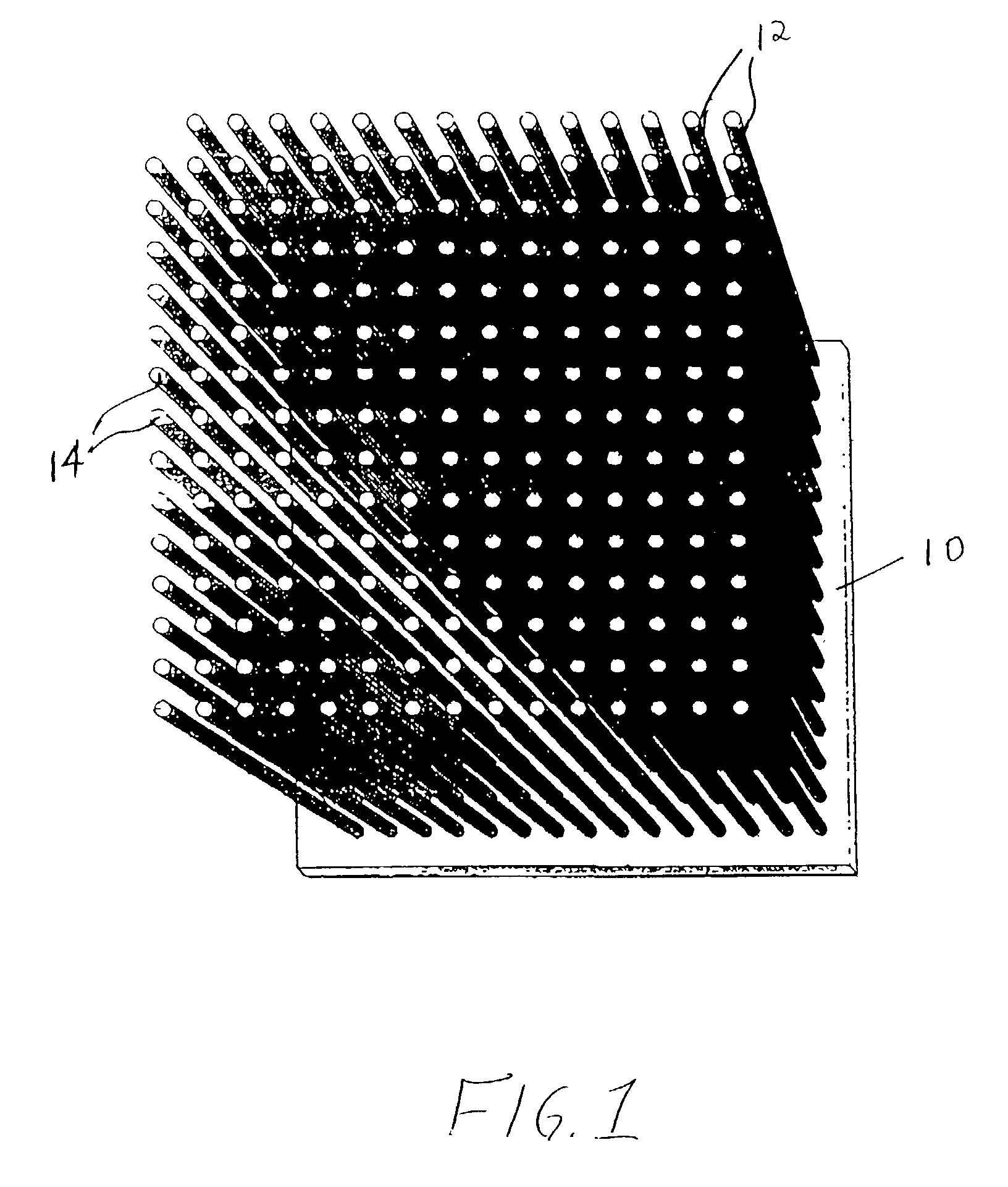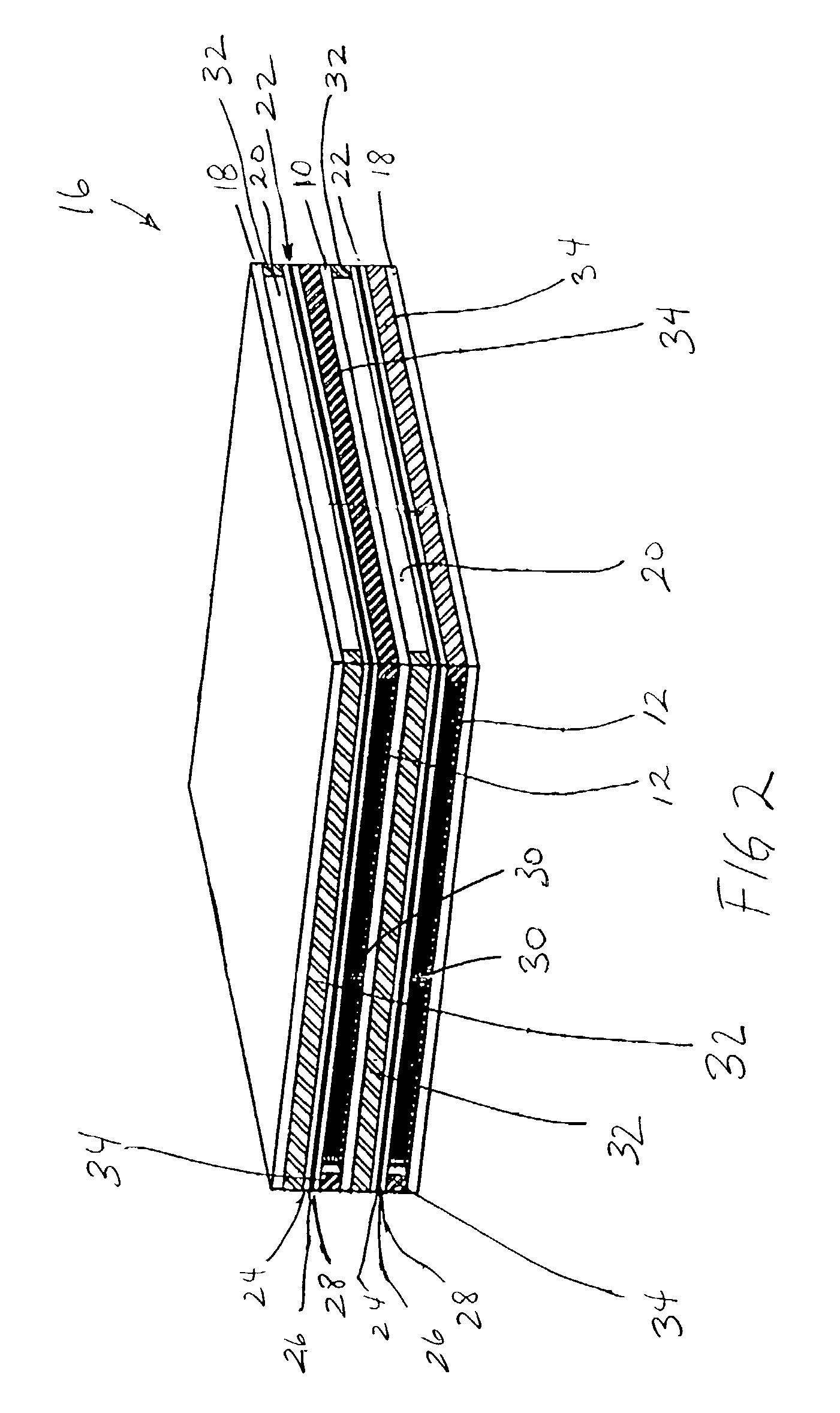Interconnect for solid oxide fuel cells
- Summary
- Abstract
- Description
- Claims
- Application Information
AI Technical Summary
Benefits of technology
Problems solved by technology
Method used
Image
Examples
example 1
[0066]Samples of separator material, approximately 25 mm (1″) square, were cut from a ferritic stainless steel, sheet alloy (E-BRITE®) and coated with a Ni-based braze alloy (NICROBRAZE® 150) powder. The sheet sample was set-up beneath a jig which utilized a multi-hole ceramic block to position multiple short lengths of a super-alloy wire in contact with, and orthogonal to, the sheet. The assembly was placed in a high temperature, vacuum-brazing furnace and, via a ramped heat-treatment cycle, the wires were brazed to the separator sheet at approximately 1100° C. The super-alloy materials used in wire form, were HAYNES® alloy 230 or 230W, in various diameters including 0.25 mm (0.010″), 0.375 mm (0.015″), 0.75 mm (0.030″) and 0.875 mm (0.035″). The brazed wire-sheet assemblies, of a given wire diameter, were cropped parallel to the separator plate to produce brush-like components having a nominal wire length of approximately 3 mm (0.12″).
example 2
[0069]The experiments of Example 1 were repeated using a 50 / 50 volume percentage of LSM and strontium-doped lanthanum cobalt-doped ferrite (LSCF), respectively. In addition to HAYNES® alloy 230 or 230W, a FeCrAlY wire (KANTHAL® A) was also evaluated. After 10 thermal cycles, the 0.5 mm (0.020″) FeCrAlY wire bond failed. After approximately 40 cycles, the 0.875 mm (0.035″) diameter HAYNES® alloy 230-W wire bonded samples failed. The 0.25 mm (0.010″) diameter HAYNES® alloy 230-W wire bonded samples did not fail even after 100 thermal cycles.
example 3
[0070]Similar test specimens were prepared for the anode interconnector by brazing Ni foam to E-BRITE® sheet. Various grades of Ni foam (manufactured as INCOFOAM®) including pore densities ranging from approximately 90 pores per inch (ppi) to 20 ppi, metal-loading densities ranging from approximately 500 to 5000 g / m2and thicknesses ranging from approximately 1 to 5 mm were evaluated. The foams were bonded to typical anode material (NiO-YSZ), using a paste of NiO in a binder, and fired under reducing conditions at 950° C. All samples formed tenacious Ni bonds with significant thermal cycling capability.
PUM
 Login to View More
Login to View More Abstract
Description
Claims
Application Information
 Login to View More
Login to View More - R&D
- Intellectual Property
- Life Sciences
- Materials
- Tech Scout
- Unparalleled Data Quality
- Higher Quality Content
- 60% Fewer Hallucinations
Browse by: Latest US Patents, China's latest patents, Technical Efficacy Thesaurus, Application Domain, Technology Topic, Popular Technical Reports.
© 2025 PatSnap. All rights reserved.Legal|Privacy policy|Modern Slavery Act Transparency Statement|Sitemap|About US| Contact US: help@patsnap.com



